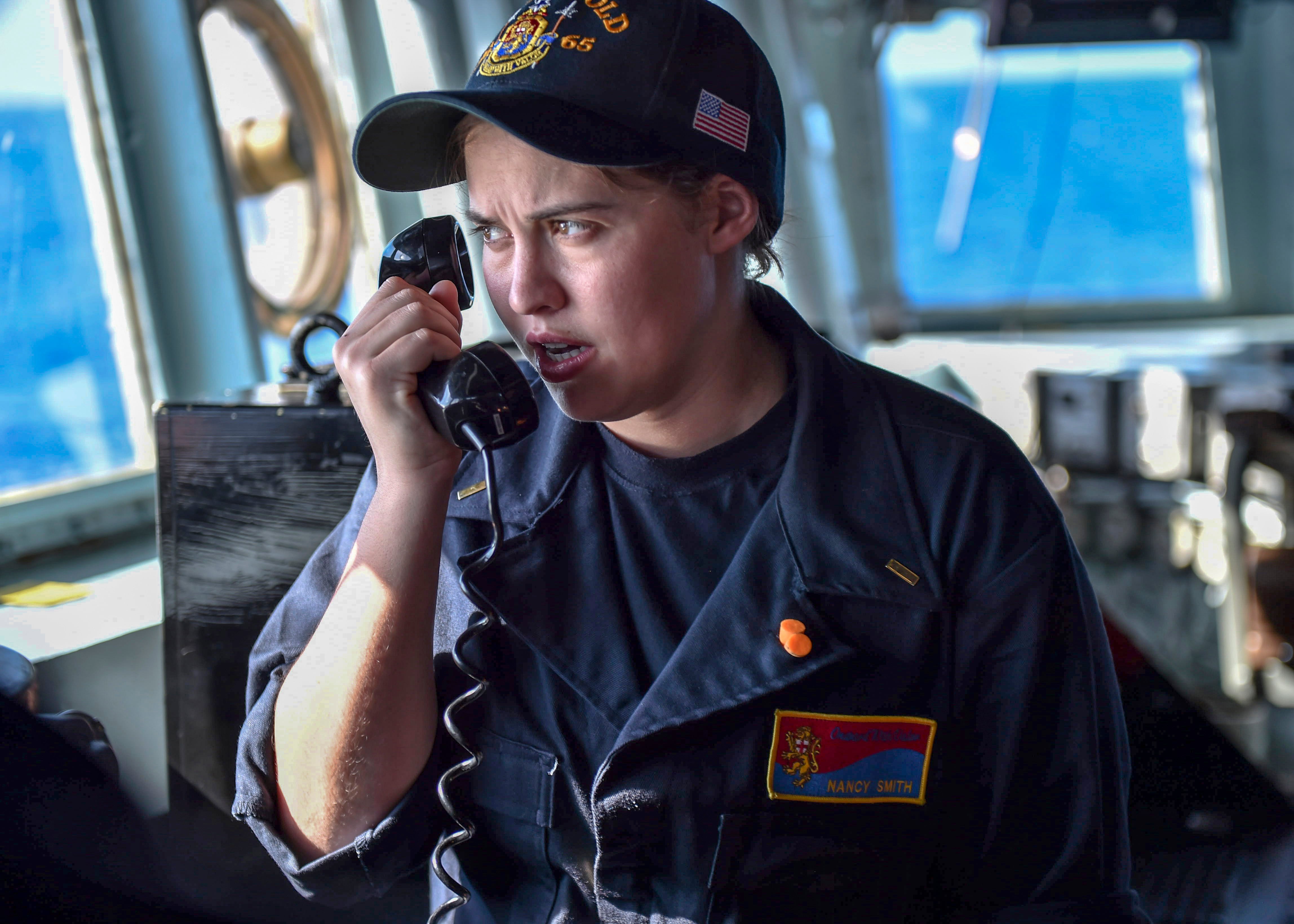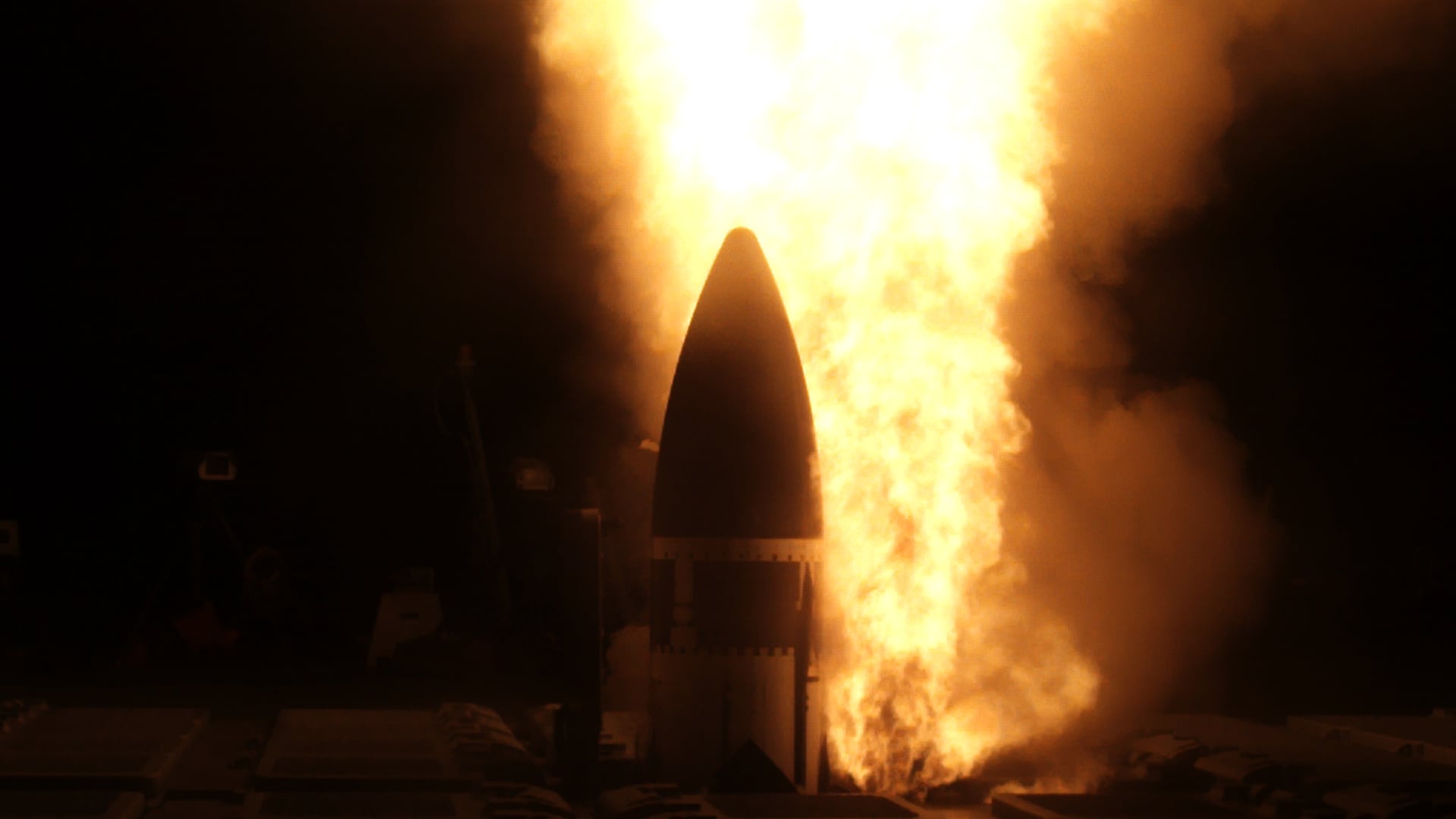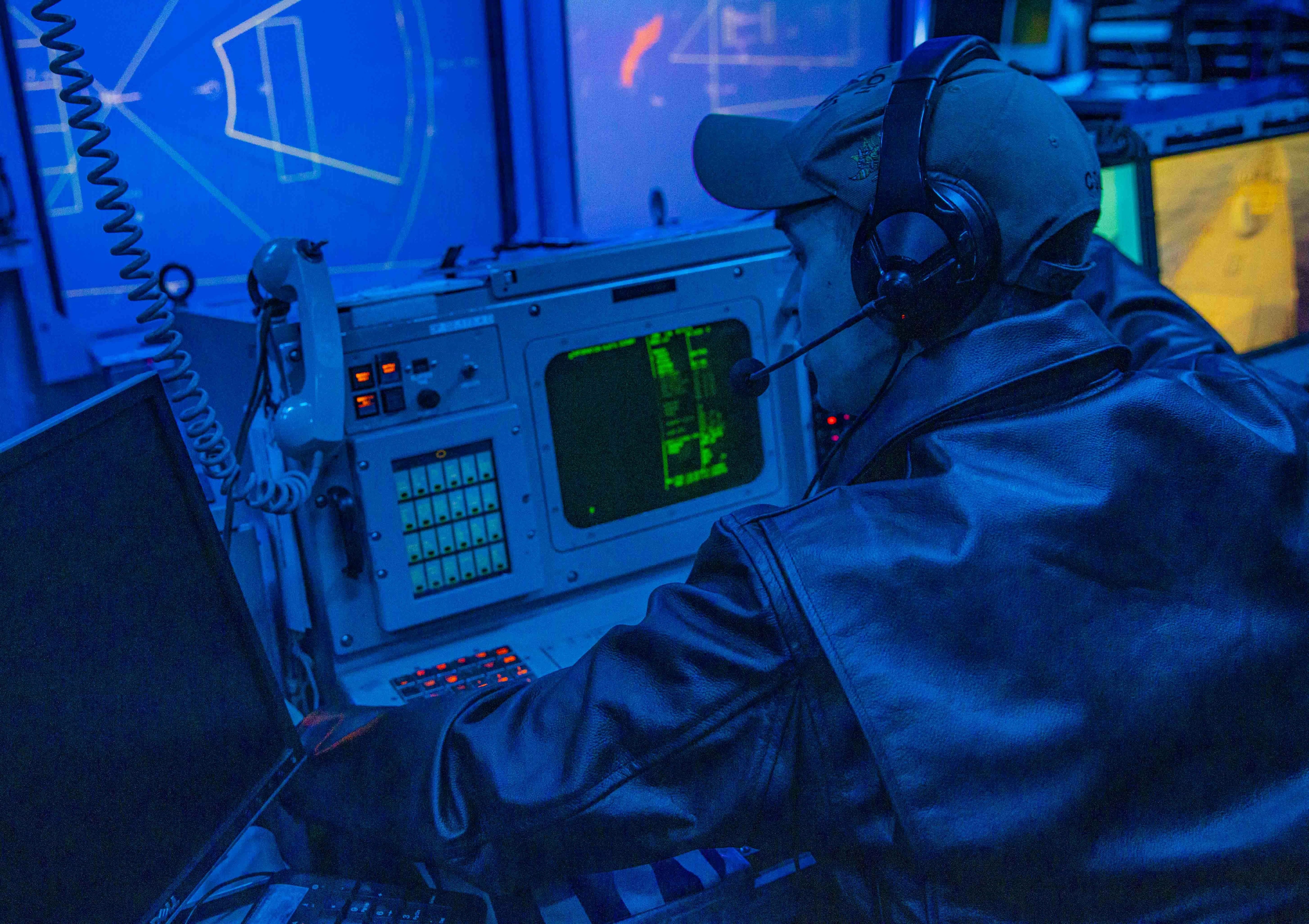ARLINGTON, Va. — The U.S. Navy is considering how best to equip ships and sailors to take advantage of fleetwide connectivity that Project Overmatch will provide. At the heart of this is the Integrated Combat System, a single hardware-agnostic software suite that all ships can pull from to conduct missions alone or in a group.
The service is still in the early stages of developing its Integrated Combat System, something that the director of surface warfare says is a concept today but should translate to a program of record within the next two or three years.
“ICS will enable a surface action group, a strike group and a fleet — or any combination of Integrated Combat System-equipped ships — to operate as a single system, to become a system of systems,” Rear Adm. Fred Pyle said Feb. 1 at an American Society of Naval Engineers conference in Arlington, Virginia.
The warfighting value of the Integrated Combat System is its ability to deliver decision superiority at machine speed, he added. The business case is that it will allow the Navy to deliver future capabilities via software uploads rather than expensive hardware installations.
The key to this “paradigm shift” — of connecting a group of ships and allowing their combat systems to collectively agree on a best course of action based on ships’ locations, munitions stocks and other factors — is the aids that will help humans make rapid decisions, Pyle explained.
“The ability for a decision-maker — whether they’re in the fleet, whether they’re in a strike group, whether they’re in ... a maritime operations center, or whether they’re sitting on a cruiser — to be able to pair any sensor to any shooter, that’s pretty powerful,” he told Defense News during the conference.

Bryan Clark, a naval operations expert with the Hudson Institute think tank, recently told Defense News that Project Overmatch has shifted its focus from communications to command and control.
That includes the development of “command-and-control tools that we want to give commanders so they can use the communications they have available to them to formulate courses of action,” he said, “and then implement those at a scale and tempo that maybe the opponent can’t keep up with.”
These tools don’t include a lot of artificial intelligence yet, he added, but perhaps enough machine learning to help the tools weed out ideas that haven’t worked or weren’t previously selected. They do, however, rely on modeling and simulation to pitch possible actions to the user.
The value, Clark said, is that U.S. adversaries like China will expect American naval formations to behave in predictable ways in line with established doctrine. “If we can create more unpredictability, then that’s going to introduce more uncertainty and potentially better deter China,” he noted.
Clark said the Defense Department has made early investments in decision aids. For example, the Defense Advanced Research Projects Agency created an artificial intelligence program that can win dogfights in the air; that could be turned into an autopilot tool for pilots in air-to-air combat. Other decision aids are aimed at Marine Corps platoon commanders, as the service pushes more data and sensors down to the unit level.
As Project Overmatch evolves, Clark said, the Navy will likely increase investments in the decision aids that will accompany the increased connectivity between ships.
Pyle said his aim for these aids, as they related to the Integrated Combat System, will be to help humans across ships work together at machine speed. Today, ships within a battle group share domain awareness, targeting information and more, but not always fast enough. With their combat systems fully netted together and each ship able to see what the others see, decision aids will help humans take full advantage of that connectivity to identify “the best option for the highest probability of success available for an engagement.”
This range of options will eventually include the expenditure of missiles across ships, as well as directed-energy weapons and jamming capabilities available throughout the battle group.
As for the business case — being able to more rapidly and inexpensively field new capabilities — the Navy and its contractors are working to decouple hardware from software within traditional combat systems: the Aegis Combat System for surface combatants, and the Ship Self-Defense System for amphibious ships and aircraft carriers.
Pyle said the military was slow to adopt software innovations from industry, but that it was now working to create a better software environment.
Joe DePietro, Lockheed Martin’s vice president and general manager for naval combat and missile defense systems, told Defense News the company is already supporting the Integrated Combat System.
When it comes to decoupling hardware from software, Lockheed is now delivering containerized and virtualized software that can run from a computer server much smaller than what currently resides on Navy ships. The service hopes it can periodically replace servers in a hardware refresh, but also separately push software updates whenever it wants to send out a fix or a new capability.

DePietro said in a December interview that this decoupling allows the Navy to move to an information-as-a-service model, where ships don’t have to store the entire software library onboard but rather could pull what is needed on demand.
Lockheed in 2022 completed an effort to transition both Aegis and the Ship Self-Defense System into a continuous integration/continuous delivery pipeline, which includes tools to pull just the right pieces of software needed to conduct a certain mission, DePietro said. These tools can speed up testing and integration efforts by weeks and months, and they support the information-as-a-service model for the Integrated Combat System.
Pyle said at the conference that these and other related efforts would “deliver the software to achieve the merger of Aegis, SSDS and other systems we have out there, so we get to that nirvana of one combat system.”
Megan Eckstein is the naval warfare reporter at Defense News. She has covered military news since 2009, with a focus on U.S. Navy and Marine Corps operations, acquisition programs and budgets. She has reported from four geographic fleets and is happiest when she’s filing stories from a ship. Megan is a University of Maryland alumna.








